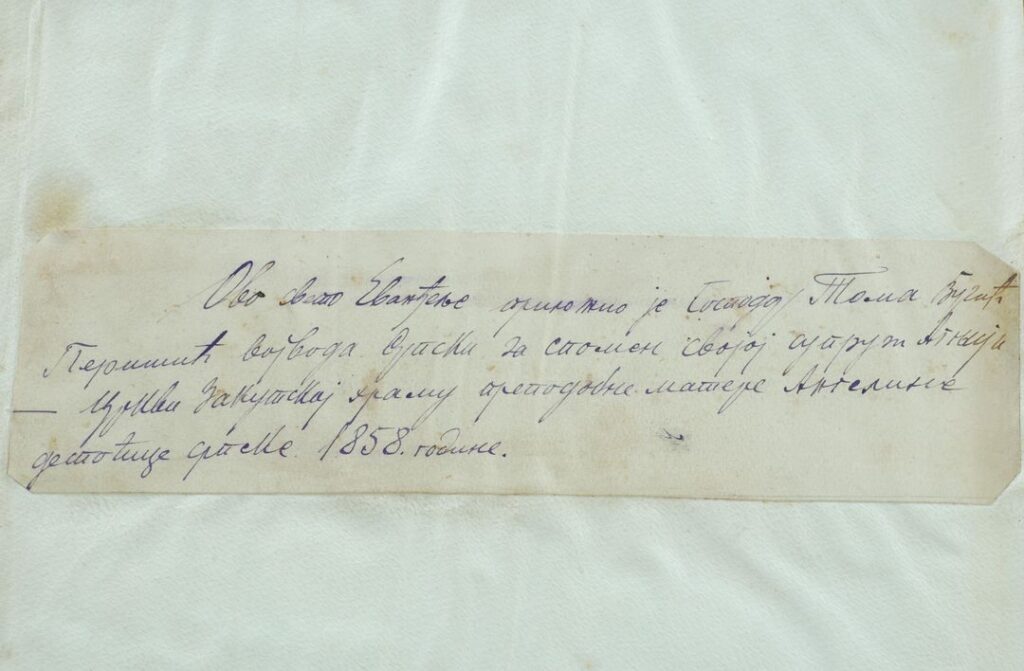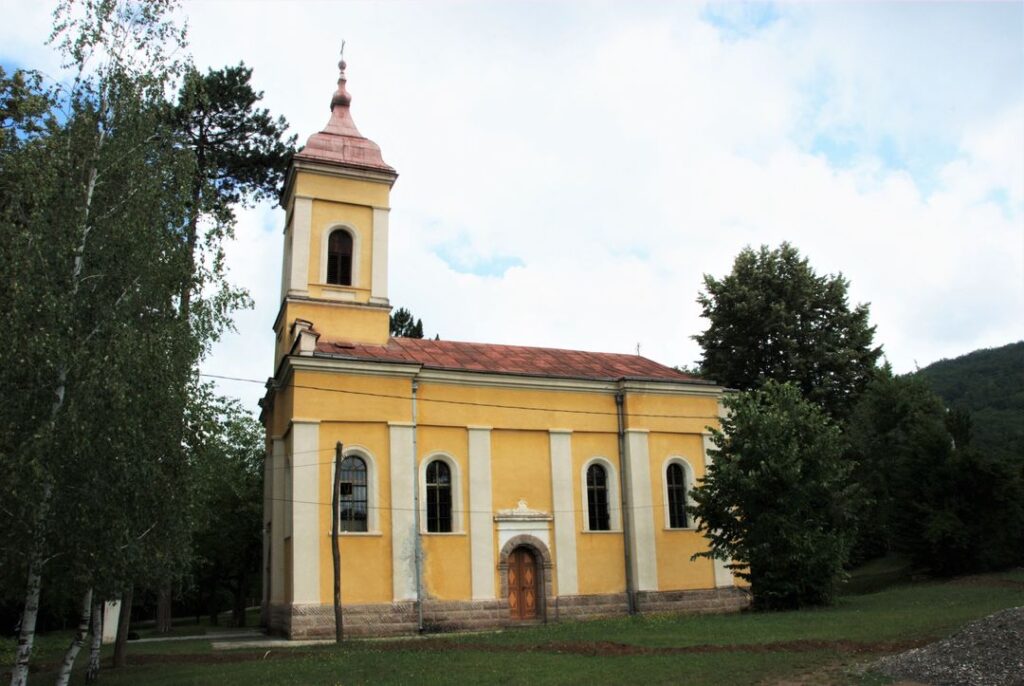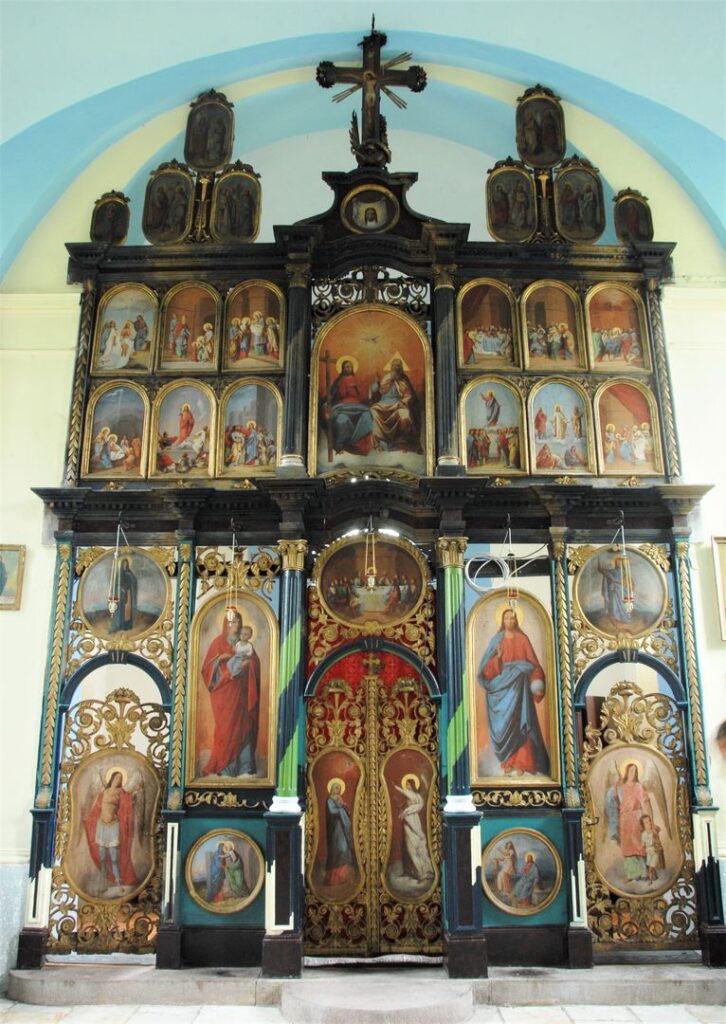On this day, July 12th, 2023, the Serbian Orthodox Church celebrates the Holy Venerable Mother Angelina of Serbia. Angelina was born around 1440 as the daughter of the distinguished landowner George Arianito Comnenos (1383-1463), lord of the area between Škundra and Vojuša in Albania, who distinguished himself in the fight against the Turks. She received an excellent upbringing and education in her home. She married the exiled, blind, Serbian despot Stefan Branković, the son of Đurađ Branković, who received refuge with her father, in November 1460. They stayed in Albania for a short time, until their first son George was born, and then, on the recommendation of Skanderbeg, Angelina’s brother-in-law, they went to Italy and bought the old Belgrade castle on the Tagliamento river in Friuli. There they had another son, John, and a daughter, Maria, and the family lived in this place, mostly in poverty, for sixteen years until the death of despot Stevan in 1476.

Hungarian King Matthias Corvinus decided to give Angelina and her sons the town of Kupinovo on the Sava River, where the family arrived in February 1486, to enjoy. In Kupinovo, Angelina soon built the church of Saint Luke the Apostle and deposited her husband’s relics in it, as well as the Obed Monastery. The older son George became a monk in Kupinova and was named Maxim, while the young John received the title of despot from King Matthias. But soon, in 1502, John passed away, and Maxim became the Metropolitan of Belgrade and Srem, and together with his mother built the Krušedol Monastery on Fruška Gora, a male monastery with a church dedicated to the Annunciation and a female one with a church dedicated to the Holy Encounter. He died in 1516 and was buried in his endowment, after which Angelina became a nun under the same name and remained as a nun in the women’s monastery in Krušedol.
Because of her many works, as a perfect Christian, wife, mother, and nun, she was called Mother Angelina by the people. She passed away peacefully on July 30th (according to the old calendar), July 12th (according to the new calendar) in 1520. Her holy relics rest in Krušedol, and shortly after their apparition, the Service to Holy Mother Angelina was written during the 16th century. In Menologium for July, manuscript from the same century, her life is also preserved. Hence, the cult of the Venerable Mother Angelina was built early and was strongly present, above all, in Srem.
However, during the 19th century, one of the few churches dedicated to this Serbian saint south of the Sava River was built in the village of Zakuti near Kraljevo, in the Gruža region, on the slopes of the Gledić Mountains. The endowment was founded by the famous Toma Vučić Perišić, one of the most important political figures of the 19th century. He built the church after the death of his wife Agnija in 1858, intended for the place of their joint burial.

The Church of Saint Angelina is a long, single nave building with a three-sided apse, a belfry on the west side, and slightly prominent east and west aisles. It is placed on a plinth made of pressed stone blocks, while the facades are decorated with characteristic wide, elegant columns, which reveal the inner structure of the temple. Harmonious proportions of the walls and balance inside the temple were achieved by careful selection of architectural and structural elements. A classically designed building with a bell tower, such as the church in Zakuta, built in the 1950s, at a time when a new phase in Serbian architecture was already beginning, belongs to the corpus of sacred buildings built under the direct influence of Prince Miloš. The bell tower, as the most important architectural element, is a symbol of the free confession of the Orthodox faith and the freedom of the entire Serbian people from the Turks – and forms the basis of Prince Miloš’s official architectural concept. It is followed by members of the civil political elite, to which Toma Vučić Perišić belonged in the first place

The entire painted decoration is based on the iconostasis, which was entirely made by the painter Dimitrije Posniković in 1872, as determined by the painter’s signature on the throne icon of the Lord Jesus Christ, in the left corner. The structure of the iconostasis points us to a developed scheme that is characteristic of the 19th century. As a student of Dimitrije Avramović and a probable participant in the creation of the iconostasis of the Cathedral Church in Belgrade, Posniković transferred painting models to his later works. The iconostasis is divided into three horizontal units with strongly emphasized architrave beams. The first zone consists of throne icons, royal and side doors, parapet panels and lintel icons. The second zone, with the central icon of the Holy Trinity, contains two rows of icons of major holidays, while the third is made up of the Crucifixion and medallions with apostles.

Above the south door is a medallion with a representation of Saint Angelina, the patron saint of the temple. She is standing on the ground without vegetation, and mountains are visible in the background. She is dressed in a dark blue monk’s robe, with the mark of her monastic dignity. He has a golden halo. The background is interestingly processed: a seemingly faceless landscape is processed carefully. The colour gradation and perspective deepened the space, although the colour scale was reduced to a minimum. In addition to the icon in the medallion on the iconostasis, Posniković also painted the kissing icon of Saint Angelina in the same way.
The Church of Saint Angelina symbolizes its co-operative and is registered in the code of the Serbian civil society of the 19th century. By raising the endowment as an act of public confession of faith, a moral act of individual charity and the creation of a lasting memory in the people, Toma Vučić Perišić, as one of the most significant political and public figures of his time, fulfilled all the criteria of the official ruling ideology.
Marija Bogdanović
art historian
bibliographer advisor
National Library of Serbia
